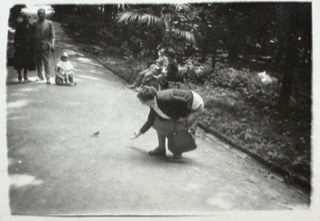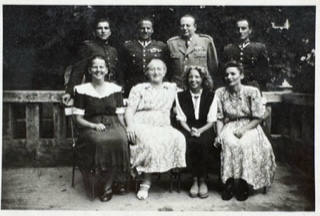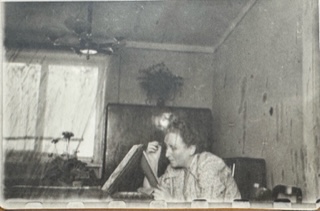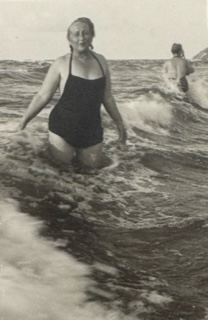In the project Le Case di Micòl, every location marked on the map is not just an address: it is a threshold, a voice, a wound. And while Ferrara holds two places of memory for Carla Neppi, the Italian Micòl, in Poland the traces lead us to two symbolic cities of Jewish memory: Kraków and Warsaw.
Kraków: The City of Roots
In Kraków, the selected address is ul. Szeroka 14, in the heart of the historic Kazimierz district. Here, among synagogues, gravestones, and small markets, memory feels layered and vibrant. This is the birthplace of the Polish Micòl chosen for the project—a young girl born here in 1927 who spent her early childhood in the city.
Kraków represents the beginning, the cradle of identity. Kazimierz, with its architecture and cobbled streets, was a lively Jewish neighborhood, full of culture, commerce, and community. Micòl’s family lived in a middle-class building, inhabited by Jewish families from the petite and upper bourgeoisie—intellectuals, merchants, and artisans. This place is not just a backdrop, but a symbol: of daily life, of small certainties, of the ordinary joys of a Jewish girl before history overwhelmed her. It is where Micòl learned to read, gazed out the window, and dreamed.

Warsaw: The Place of Interruption
In 1934, the family moved to Warsaw—a city in turmoil and a vibrant cultural laboratory. Here, the young girl attended the Sniadeckich Gymnasium and stood out for her passion for art, writing, and photography. Their new home was at ul. Marszałkowska 21/23, in an elegant building that no longer exists, destroyed during wartime bombing.

In Warsaw, the Polish Micòl grew, dreamed, and studied. But it was also here that her life was cut short. In 1942, at just 15, she was deported with her family. The last trace links her to the Warsaw Ghetto, and from there, to the train bound for Treblinka.
This part of her life is marked by an absence that becomes a haunting presence: a vanished address, a demolished house, the silence that follows deportation. Warsaw embodies denied memory, irreparable rupture—but also the determination to remember.
A Narrative Between Roots and Ruins
In telling Micòl’s story, the project bridges these two cities and two life stages: the beginning and the end. It prompts reflection on how urban spaces absorb and return memories. Kraków is the city of origins and possibilities; Warsaw, of fracture and resistance.

Kraków is the womb; Warsaw, the threshold. Micòl’s geography is not just physical but emotional: two cities, two homes, two temporal dimensions.
Students from the Warsaw Film School, a partner in the project, are creating a short film based on this dual axis: on one side, everyday life; on the other, the irruption of history. The film seeks to tell what cannot be documented: a girl’s gaze, her thoughts, her emotions—someone who lived between two cities and two temporal thresholds.
Two Cities, One Shattered Memory

In recounting this Micòl, the project weaves the two cities into a single narrative. Kraków stands for origins and the promise of a cultured, happy life. Warsaw becomes the city of trauma and disappearance. Between these two cities unfolds the young protagonist’s path: a growth trajectory cut short, a geography of loss.
To tell the story of both cities is not just to remember historical events, but to reflect on how places themselves are living witnesses of the past. In Kraków, many buildings still stand, seemingly waiting. In Warsaw, the scars of destruction are more visible: entire neighborhoods rebuilt, streets erased, absences materialized.
An Emblematic Micòl
This Micòl—perhaps more than any other—represents the deep soul of the project. She is a symbolic figure, with not one home, but several places of belonging. She doesn’t have a single voice, but a fragmented plurality of narratives. Her story opens up many crucial themes: denied childhood, plural identity, the absurdity of evil, and the enduring power of family ties.

The mental images of a book-filled home in Kraków and an elegant apartment in Warsaw overlap with faded photos, missing documents, and softly whispered stories. Through this narrative, Le Case di Micòl restores dignity to those erased not once, but twice: by history and by memory. To speak of this Micòl is to restore depth and layers to a story that risked being lost. It means connecting cities and biographies, past and present, roots and ruins.
The project Le Case di Micòl is funded by the CERV – Remembrance 2022 call and coordinated by Ferrara La Città del Cinema. Partners: Prhttps://www.praguefilmschool.czague Film School, Warsaw Film School, ACT (Belgium), Blow-Up Film and TV Academy (Italy), Fondazione per il centro studi ‘Città di Orvieto’, Fondazione Giorgio Bassani, MEIS – National Museum of Italian Judaism and the Shoah, Istituto di Storia Contemporanea di Ferrara, and Istituto di Istruzione Superiore Luigi Einaudi.